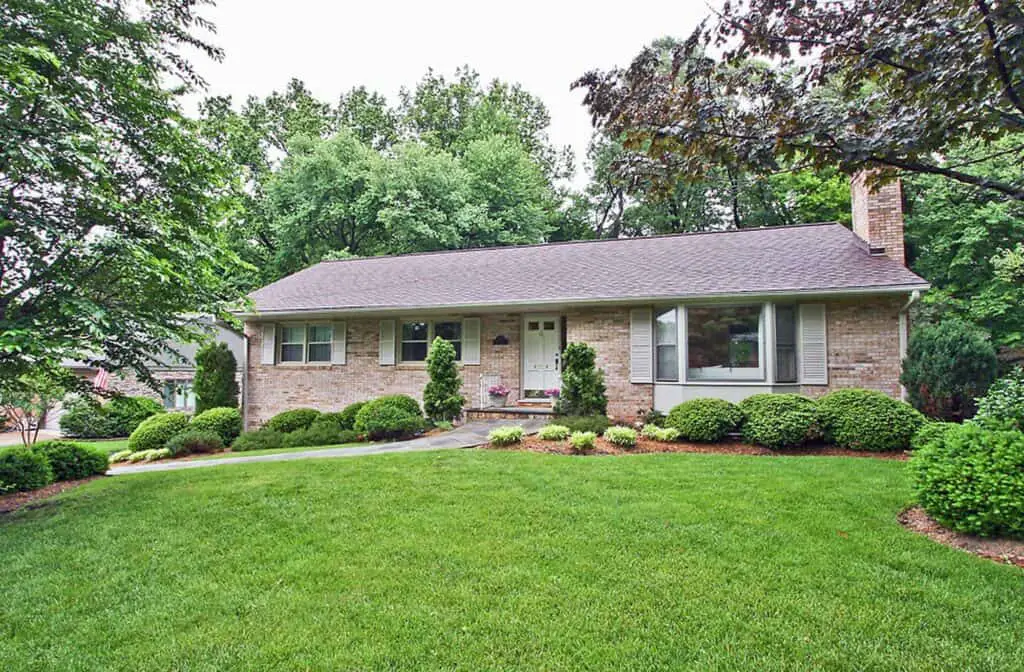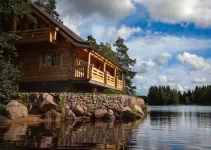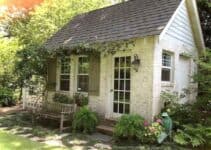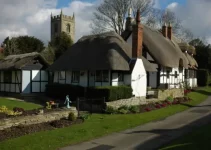You’re probably familiar with the idea of a bungalow, but have you ever given much thought to its actual definition? How about its comparison to a ranch or ranch-style house?
It’s understandable if not, as ranches aren’t particularly popular anywhere but the USA. Even so, let’s look at the differences between cottages and ranches to understand more about them.

A cottage is a small residential property without land. This is the official definition in English law, but it’s worth noting that “no land” simply refers to it not having fields for growing crops or rearing animals.
We might typically see a cottage as a picture-perfect, quaint little building with a thatched or tiled roof, whitewashed walls, and a small garden covered in flowers. But this isn’t the only definition of a cottage.
Because the legal definition is so broad, a cottage can be both single- or two-storey. There’s also no specification whether it’s detached, semi-detached, a lodge or terraced.
As such, a cottage encompasses all kinds of buildings in English law, but we usually consider it to be a small building with 2-3 bedrooms.
What is an American Ranch House?
An American ranch house is a slightly stricter class of building. Typically, it’s single-story with a rectangular floorplan and large, fairly open rooms.
Although designs vary, it’s common for bedrooms to be located far away from living areas, which are usually at the front of the building.
The design for residential ranch-style homes doesn’t have a single historical inspiration. Instead, they’re a combination of several architectural styles that were popular in America’s early history.
First is the Spanish hacienda, which was one of the go-to buildings in the American southwest (thanks to the Spanish population).
Another inspiration was the Prairie-style home, designed by American architect Frank Lloyd Wright in the early 20th century. These were in turn inspired by farmsteads and are characterized by single stories and open-plan layouts.

The History of Cottages
Cottages are one of the most traditional forms of British housing. They can trace their origins back to the early Middle Ages, where they were residential properties for cotters, a class of peasant.
Cotters were peasants who had some rights to their own land associated with the building. It meant they could grow crops and farm livestock without paying tax to the local lord.
And this is why it was important to mention the lack of land in the current definition of a cottage. The 17th-century Enclosures Act removed the right for cottages to have land, which could previously have been up to 4 acres.
Once the definition changed, the definition of cottages was blown wide open. It’s why we can have detached thatched buildings and terraced houses all count as cottages.
In the 19th century, cottages became popular across England for housing workers moving to cities during industrialisation.
This is where small, terraced properties came from, which would have at most 4 rooms. But it was more common for them to have 3, with most of the home’s inhabitants piled into a loft at night.
Our modern perception of a cottage is quite firmly fixed. Despite it covering so many kinds of buildings, most of us see a cottage as a half-timber structure with a thatched roof sitting in a small garden. And this is fine because it’s probably the nicest kind of cottage out there.
The History of Ranches
Ranches are a fairly modern invention by comparison. The first were built in the 1930s in California, where there was a property boom thanks to growing urban populations.
But it wasn’t until the 1950s that ranches became popular as a go-to type of building.
As you can probably guess, this was influenced in part by WW2. There was a need for inexpensive and quick-to-build properties, and the ranch fit this bill perfectly.
While early models were built with brick, they quickly became timber-framed batten structures. It’s thanks in part to ranches that this form of construction became so popular in the US.
The ranch fell out of popularity during the 1960s, as they became seen as too common and old-fashioned. Considering 9 out of 10 houses built in the 1950s were ranches, it’s easy to see why.
However, they came back into fashion during the 1990s. Ranches are affordable, entry-level homes thanks to their locations and design, so they make sense for first-time buyers.
A lot of this interest is in existing buildings, though, rather than in new constructions.

Difference Between Ranch and Cottage
Now that we understand a bit about the design and history of these types of buildings, we can run over the main differences.
1. Construction
Cottages are almost exclusively made of brick and mortar, with some variation in specific materials. Ranches, on the other hand, are often made from inexpensive materials like batten, boards, and timber frames.
They fill a roll much like pre-fab homes in the UK: they’re meant to be inexpensive and quick to produce. Also, America’s vulnerability to hurricanes, tornados, and floods means that inexpensive buildings just make more sense.
2. Popularity
Cottages are probably one of the most popular forms of housing in the UK, simply because the definition is so broad. Sure, you might not consider a 19th-century terraced housing block to be cottages, but they are.
Similarly, cottages are fairly popular in the US thanks to its interest in European revival. Although American cottages are larger and newer, they still follow much of the same design as British ones.
On the other hand, ranches are almost non-existent in the UK. You might see American restaurants built in the ranch style, but outside of that, the country has no need for them.
After all, a ranch is almost identical in design to a bungalow, just bigger. And if there’s one thing Britain can’t do with its homes, it’s make them too big.
As mentioned, ranches are incredibly popular in the USA. Having 90% of your new housing stock being ranches for an entire decade inevitably leads to there being a lot of them in your country. Similarly, the ranch style is used frequently for standalone commercial buildings like restaurants and shops.
3. Age
English cottages can be pretty old – it’s not uncommon to see ones built in the 16th century, although you’ll be looking closer to the 19th century in more urban areas. Still, this is quite a bit older than ranch buildings.
Ranches were first built in the 1930s, so there are none in existence that are even 100 years old. However, it’s far more likely that the ranch homes you’ll see on American streets are from the 1950s housing boom, making them even younger still.
4. Size
Cottages, by their very definition, are small homes. Even in America, you won’t find particularly large cottages because they mimic the traditional British style.
That said, even if they only have 3 bedrooms, they’ll be larger than their European cousins.
Ranches aren’t mansions, but they’re certainly much larger than cottages. Part of their definition is their expansive floorplan. Much like British bungalows or villas, you need more space if you’re going to put all your rooms on a single storey.
Part of this is also due to the way the rooms are arranged. It’s common to have surprisingly long hallways for a single-storey building because the bedrooms are kept away from living areas.
This is partly so the private rooms are at the back of the house away from the public street.
5. Location
Ranches are more common in suburban and rural areas, although the latter is more likely to be defined as a farmstead-style home. As you can probably guess, their location is partly dependent on their size.
But it also relates to their history. Ranches were built to accommodate the rise in nuclear families post-war, many of whom needed to live near cities for work.
Equally, they didn’t want to live in the cities themselves, so this gave rise to the concept of suburban living.
However, cottages can be located pretty much anywhere, in the UK at least. For example, old cottages will be common in small rural villages where little has changed in terms of residential layout.
While there might no longer be a lord of the manor, the buildings often remain the same.
But you can also find cottages in more urban areas, particularly those that benefitted from the Industrial Revolution. Victorian cottages are common in areas that had factories or mining, many of which still exist today.
Final Thoughts on Cottages vs Ranches
So there you have it, everything you need to know about the differences between cottages and ranches. Although ranches aren’t too common in the UK, having a solid definition of them is still helpful.
Next time you’re watching an American show set in a ranch, be sure to correct people when they refer to it as a bungalow!
If nothing else, it’ll give you a chance to quote some of the lesser-known cottage and ranch facts we’ve mentioned here!



